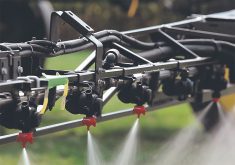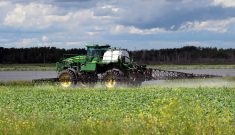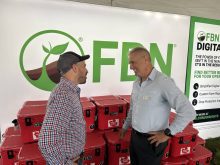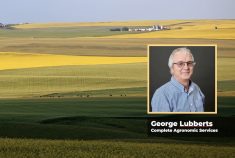Retailers say glyphosate and glufosinate prices are at all-time lows and will likely start to increase rather than fall further
SASKATOON — Now is a good time to buy herbicides, say retailers of the product.
Johnston’s Grain is telling its clients that the crop inputs are at rock bottom prices.
Related stories:
“When adjusted for inflation, we’re at by far the lowest prices we’ve ever seen on glyphosate 540 and glufosinate 150,” the company said in a daily email to customers.
Read Also

Pakistan reopens its doors to Canadian canola
Pakistan reopens its doors to Canadian canola after a three-year hiatus.
Manufacturers of the products are telling Johnston’s that there is no money in making the chemicals at today’s price levels.
“We’re hearing from many manufacturers that they are likely to shut down production until margins improve on many of these products,” said the crop input retailer.
Johnston’s said it is not trying to scare its clients into buying the products.
“What we’re saying is … downside price potential is extremely limited,” the firm stated in its email.
“Upside potential is quite high.”
The company is concerned that prices could swing in a hurry in the current volatile geopolitical space.
“We would prefer to see our clients buy one to two years supply of these products at the all-time lows rather than the all-time highs,” Johnston’s stated.
Alberta Agriculture tracks farm input prices. Its latest data shows that farmers paid $73.57 for a 10-litre jug of Roundup WeatherMAX liquid in August.
That is down from $98.69 a year ago and the recent high of $166.81 in December 2022.
Herbicides are the second biggest variable expense for most wheat and canola farmers, according to Saskatchewan’s 2024 Crop Planning Guide.
In fact, in some soil zones, it even takes the top spot away from nitrogen fertilizer.
Breen Neeser, Canadian country manager for Farmers Business Network (FBN), said retailers have been reluctant to purchase big volumes of the herbicides in the current environment.
“If you’re in a declining market and you have a bunch of inventory, then you lose a lot of value,” he said.
That is exacerbating slumping demand for the product. However, he believes the market has bottomed out and he agrees with Johnston’s that there is a greater likelihood of prices rising 15 per cent than falling by the same amount.
“I don’t think there is much question that it’s a really good value right now,” said Neeser.
He is not 100 percent certain if the market is in balance or if it is short of product.
However, he suspects it might be short because inventories are low on the farm and at the retail level and there has been some curtailment of production, so that could result in higher prices if the demand is there.
That is why he believes growers should seriously consider buying a portion of their anticipated needs for the 2025 crop.
However, he stopped short of advising them to purchase two years of supplies because farm cash receipts are down and margins are thin, so growers might not have the cash available for such a big commitment.
Neeser said there is no real herbicide-buying window. He has seen farmers stock up in July, September or November.
The decision is primarily price driven, although there are other considerations. For instance, glufosinate requires heated storage.
FBN has a crop input sale that runs between Nov. 1 and Dec. 11.
“We’re really excited about the winter months and our position in the market,” he said.
Neeser does not anticipate that today’s low herbicide prices will have any influence on what crop gets planted in the spring of 2025.
However, he does think farmers will be less likely to cut corners when applying the products to their crops.
















